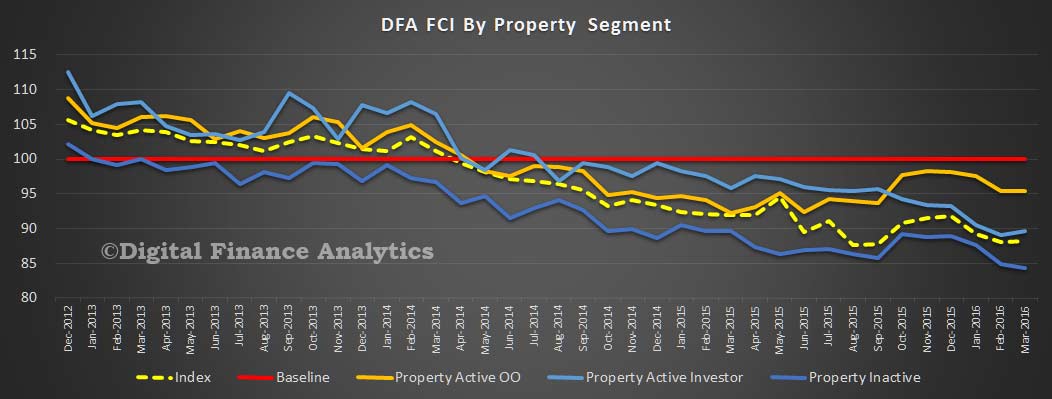The latest data from our Household Finance Confidence Index showed little change in the month of March 2016, moving from 88.11 to 88.14 when averaged across all households. As the findings from last month therefore remain current, this will be a brief update this time around. Confidence is still below the neutral setting of 100, where the index has been since 2014.
 Within the property segments, we saw little change in owner occupied households whilst there was a small rise in property investor households confidence, as talk of negative gearing changes dissipated and property price growth remained quite robust, this despite offsets created by rising interest rates. Property inactive households remained the least confidence, especially as rental growth is still above income growth, so housing is becoming ever more expensive.
Within the property segments, we saw little change in owner occupied households whilst there was a small rise in property investor households confidence, as talk of negative gearing changes dissipated and property price growth remained quite robust, this despite offsets created by rising interest rates. Property inactive households remained the least confidence, especially as rental growth is still above income growth, so housing is becoming ever more expensive.
Overall households budget expectations were mixed, thanks to the general policy confusion/vacuum which currently exists.
We also saw some small improvements among households with deposit savings, reflecting small improvements in rates of return. In contrast, those with stock market investments were more concerned about current returns as markets remained volatile.
By way of background, these results are derived from our household surveys, averaged across Australia. We have 26,000 households in our sample at any one time. We include detailed questions covering various aspects of a household’s financial footprint. The index measures how households are feeling about their financial health. To calculate the index we ask questions which cover a number of different dimensions. We start by asking households how confident they are feeling about their job security, whether their real income has risen or fallen in the past year, their view on their costs of living over the same period, whether they have increased their loans and other outstanding debts including credit cards and whether they are saving more than last year. Finally we ask about their overall change in net worth over the past 12 months – by net worth we mean net assets less outstanding debts.
